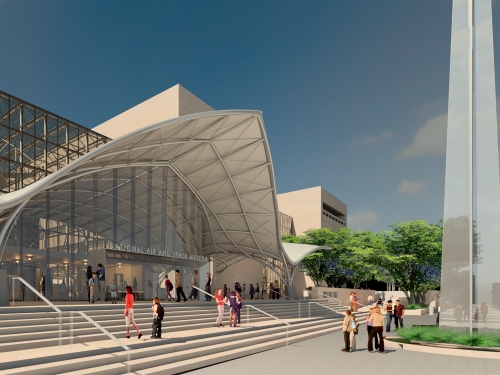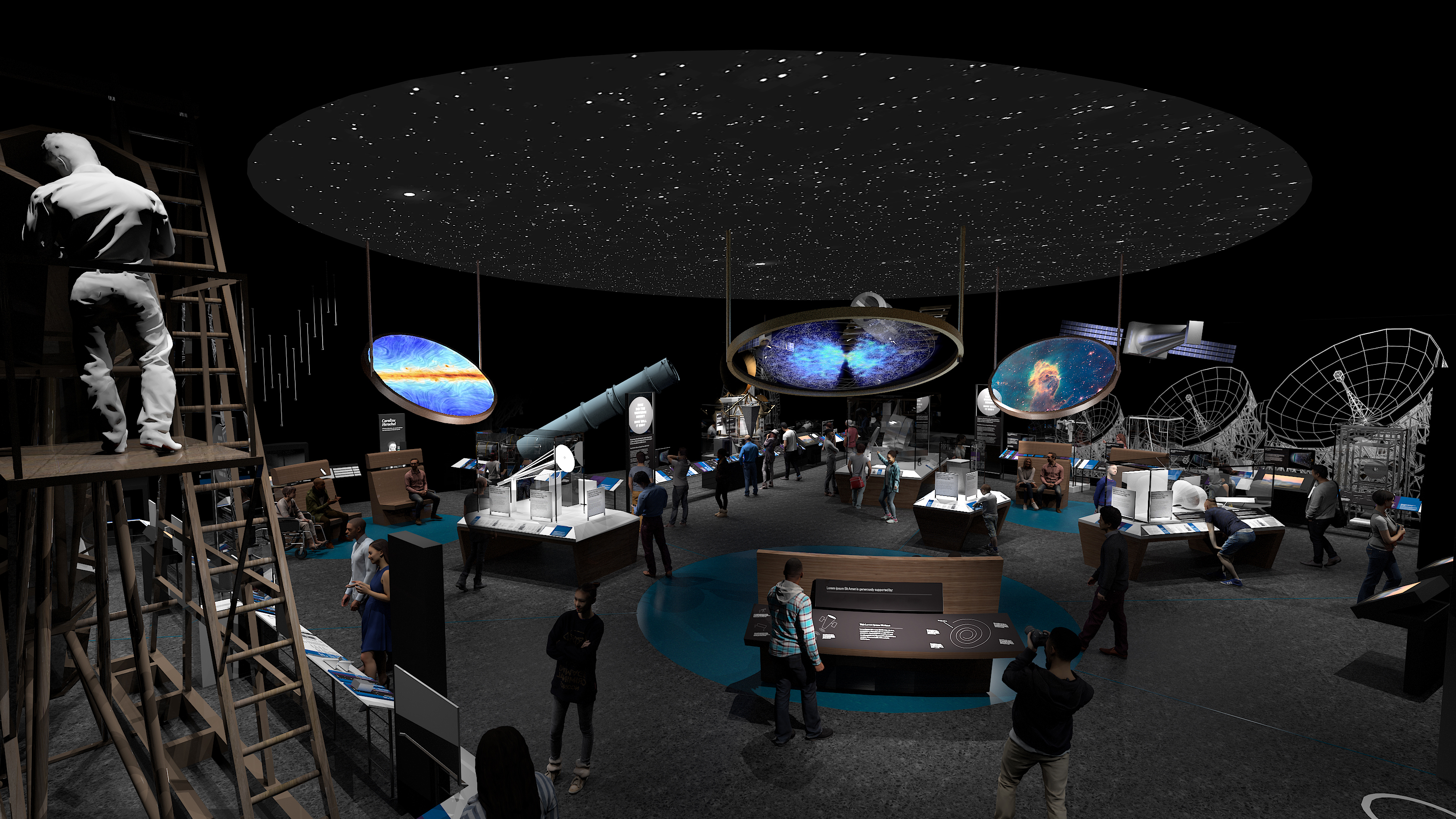
National Air and Space Museum Receives Over $11 Million From National Science Foundation

Artist's rendering depicts the new Discovering Our Universe Gallery featuring lenses at the center to augment the starry sky and the Bruce Telescope at rear.
The Smithsonian’s National Air and Space Museum has received over $11 million from the U.S. National Science Foundation to support the creation of the new “National Science Foundation Discovering Our Universe” exhibition. The exhibition will illuminate how the development of new and more precise tools transformed humankind’s understanding of the origin, content and fate of the universe. It is anticipated to open in 2026 and is part of the museum’s ongoing transformation of its galleries at its flagship building in Washington, D.C.
“We are very appreciative of the National Science Foundation’s generous support of the transformed ‘Discovering Our Universe’ exhibition,” said Chris Browne, John and Adrienne Mars Director of the museum. “NSF was one of the original supporters of the museum’s prior version of this exhibition, the ‘Explore the Universe’ gallery, which opened in 2001. With NSF’s support, this new exhibition will play a critical role in educating the public about the science of astronomy.”
The exhibition will show the history of astronomy and where the field is headed. It will feature a variety of artifacts that have helped astronomers understand the world people cannot see, including artifacts from the Event Horizon Telescope that created the first direct photo of a black hole, the Laser Interferometer Gravitational Observatory that detected the first gravitational wave from colliding black holes and the DTM Spectrograph that Vera Rubin used to yield evidence for the existence of dark matter. The gallery will also be a dynamic space for learning and will be built with the infrastructure for museum experts and educators to broadcast into classrooms around the world.
“The U.S. National Science Foundation is proud to help inspire the next generation of explorers to find their STEM spark in the ‘National Science Foundation Discovering Our Universe’ exhibition at the National Air and Space Museum,” said Sethuraman Panchanathan, the foundation’s director. “NSF looks forward to helping bring the magic and mystery of our galaxy to individuals of all ages, abilities and backgrounds and empower them to interact with wonders of our world and beyond.”
More information about how the museum is transforming all of its exhibitions and revitalizing the building is available.
The National Air and Space Museum in Washington, D.C., is located at Sixth Street and Independence Avenue S.W. and is open daily from 10 a.m. to 5:30 p.m. Admission is free, but timed entry passes are required to visit the museum’s location in Washington. The museum’s Steven F. Udvar-Hazy Center is located in Chantilly, Virginia, near Washington Dulles International Airport, and is open daily from 10 a.m. to 5:30 p.m. Admission is free for the Udvar-Hazy Center, but there is a $15 fee for parking.
###
SI-273-2023
Amy Stamm
202-633-2392
Alison Mitchell
(202) 633-2376
mitchellac@si.edu
